日本語 English
A Chinese cabbage aka wom bok is in season now. It belongs to Brassicaceae same as radishes. When it has been begun to eat in Japan is in the 20th century unexpectedly. It always often came before and in the Edo era, but it t is because it was impossible to maintain the cultivar.
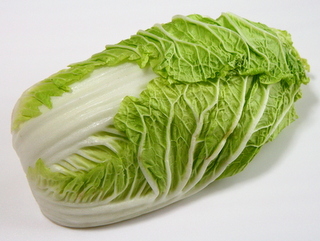
It is common to eat the head leaf and is often heated and eaten in Japan, but in U.S.A, and it is eaten as salad. A brisk sense of touch by teeth and natural sweetness are characteristic. Sweetness increases and becomes more delicious when a Chinese cabbage is exposed to the frost.
The main component of the Chinese cabbage is water, but includes the component which, besides, is good for health. Other than a dietary fibre, calcium and vitamin K, potassium which exhaust sodium (salt) and prevent high blood pressure, a lot of vitamin A and C with the fair skin effect are included.
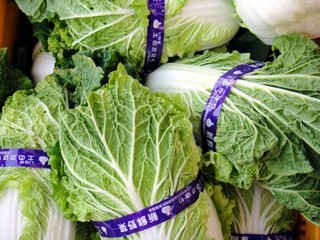
■ How to Choose
– A whole Chinese cabbage
• Winding is steady from the tip
• An outside leaf stands
• Very heavy as you have a same size one
• Elastic when you grasp the head of the Chinese cabbage by hand
– A cut Chinese cabbage
• Clogged up well with a leaf to see a section
• Avoid the one has a brown and dried leaf because freshness of section is lost after cutting it.
• Avoid the one that the rotation of the core rises to grow up even after cutting it
because the freshness declines.
*It is the evidence of more delicious that an outside leaf is brown in the evidence of being exposed to the frost.

■ How to Store
• In the case of a whole one, keep for approximately 2-3 weeks by putting it in cool and dark place
wrapped with newspaper entirely. If newspaper gets wet, change it.
• Put it lengthwise otherwise spoils when put it laterally.
• When you store leftover or a cut leaf, cover with a chilling wrap and store in refrigerator.
• Because the Chinese cabbage is vulnerable to heat as for the summertime, wrap it with chilling wrap,
keep it in a refrigerator and use it up early.

■ Cooking Tips
When use the Chinese cabbage, tear off from an outside leaf, and let’s use it.
– Eating fresh leaves such as a salad
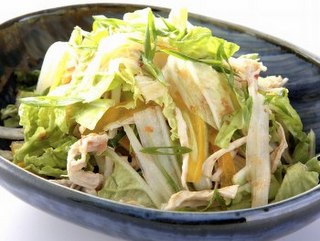
Cut the Chinese cabbage to cut the fibre (cut across). Crispness increases when is expose to cold water once before cooking.
– Pickles, fried food
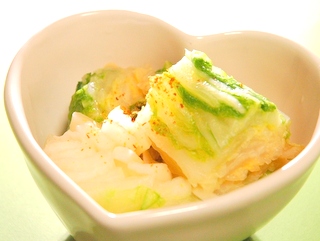
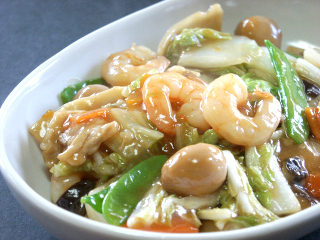
Cut vertically to keep the fibre. Good to cook the Chinese cabbage quickly over a high heat because it is juicy.
– Simmered, Stewed Food, Hot pot
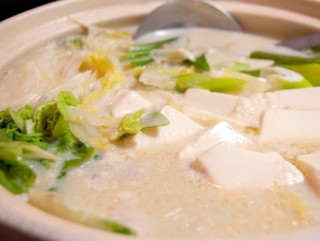
The time to cook shortens by cutting a core into slivers so that a cut end becomes large.
Use the seasonal Chinese cabbage well, and let’s fully taste it now.



